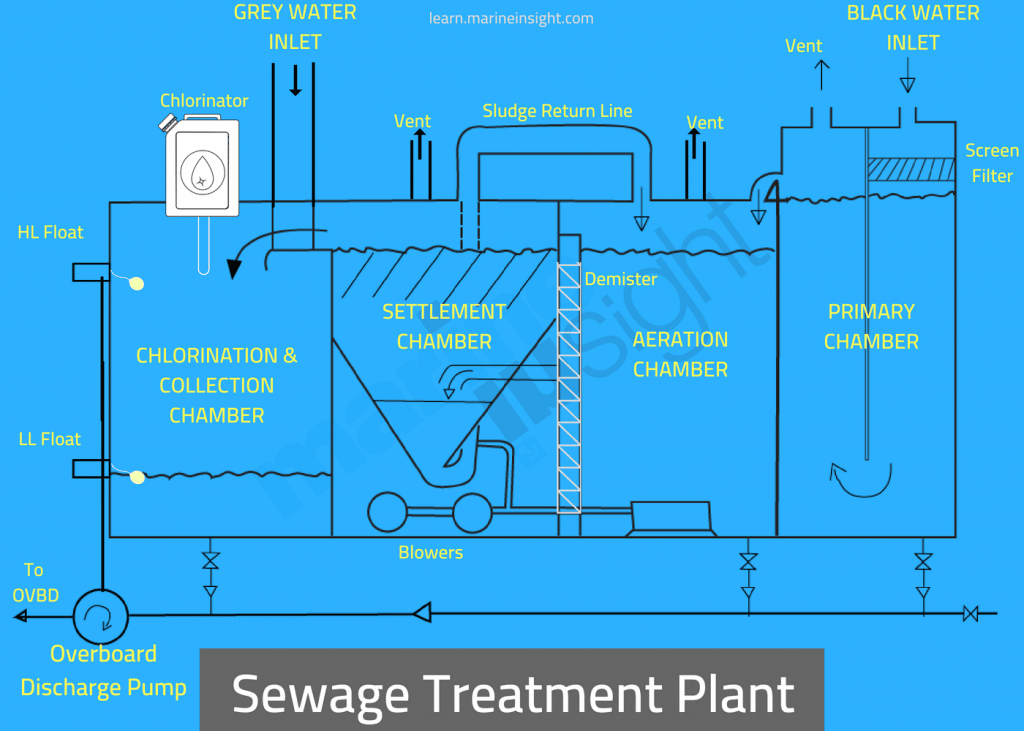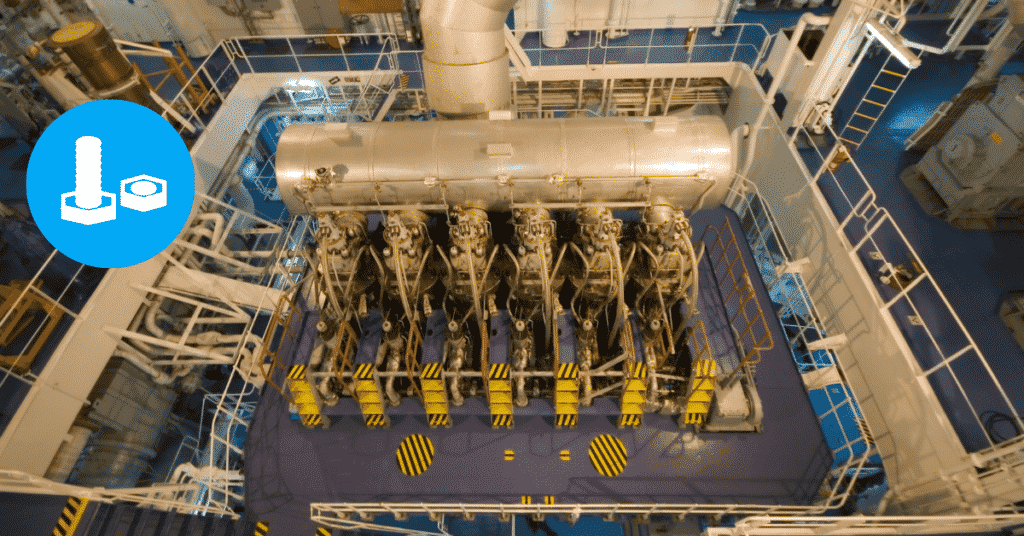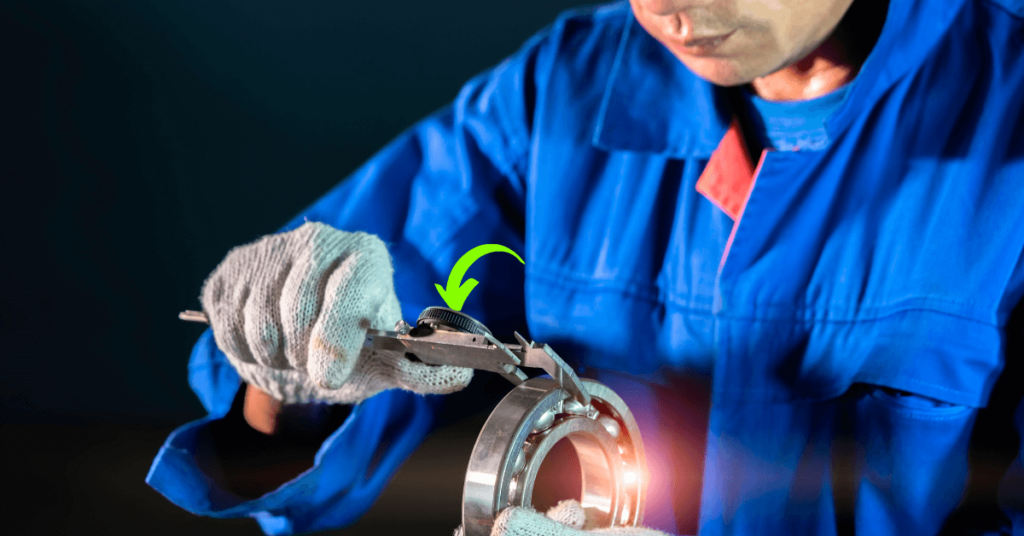Why Boilers Are Used On Ships?

A boiler is a pressure vessel that generates steam or hot water by boiling water in an enclosed chamber. The heat required to boil the water is generated by burning a fuel source in the boiler furnace, which can be diesel, fossil fuel, coal, etc.
Purpose Of Boilers On Ships
When used on ships, the main purpose of the boiler is to generate steam, which can be further utilised for several heat transfer processes. Modern boilers now come integrated with a heat recovery system, which maximizes energy usage and increases overall efficiency.
To understand the usage of boilers on ships, it is essential to understand the broad classification of Marine boilers used on ships:
1. Main Boiler
2. Auxiliary Boiler
1. Main Boiler
The main boiler generates high-pressure steam for the ship’s propulsion. This propulsion is typically a steam turbine system that requires continuous steam input. Ships generally use heavy fuels, but with new stringent environmental regulations, they can also operate using Marine Gas Oil (MGO) or LNG fuel, which has high energy density and low carbon emissions.
Ship boilers are large enough to generate high-capacity steam, and they continuously operate at high pressure and high loads.

2. Auxiliary Boiler
The auxiliary boilers are low-capacity boilers, smaller in size than the main boilers. They generate low-pressure steam, which is used to heat cargo and fuel, domestic use, and sometimes electricity generation. They are equipped with a fuel system that uses lighter fuels like marine gas oil or marine diesel oil. Since they are small, their start-up and shutdown time is less than that of the main boiler, allowing for quick steam production.

| Feature | Main Boiler | Auxiliary Boiler |
|---|---|---|
| Primary Function | Propulsion (in steam turbine ships) | Various onboard services (heating, cleaning, power generation, etc.) |
| Size and Capacity | Large, high-capacity | Smaller, lower capacity |
| Steam Pressure | High pressure (for turbines) | Lower pressure (suitable for auxiliary services) |
| Boiler Type | Typically water-tube boilers for higher efficiency and pressure | Fire-tube or water-tube, depending on application and ship size |
| Fuel | Heavy fuel oil, sometimes with diesel oil or natural gas | Heavy fuel oil, diesel oil, or sometimes exhaust gas from the main engine |
| Examples | Ocean liners (historical), some naval vessels, icebreakers | Tankers, cargo ships, cruise ships, all types of vessels for auxiliary services |
Boiler Applications on Ships
Steam Propulsion: Many naval ships, icebreakers, LNG ships, and old ocean liners still use a steam propulsion system, which consists of a mega steam turbine propulsion system connected to the propeller, which drives the massive ships.
The main boiler provides high-pressure steam, varying from 20 to 60 bars depending on the type of vessel and propulsion system.
Power Generation: A steam generator, which also uses steam turbines, can generate electricity on the ship. The Auxiliary boiler supplies low-pressure steam to the steam turbine generator. In some ships, emergency generators can also be run on steam.
The auxiliary boiler provides steam in a pressure range of 6-15 bars depending on the type of vessel and propulsion system.
Cargo Heating: Tanker ships are built to carry huge amounts of oil in their cargo hold. It is crucial to heat this oil cargo as the ship travels through various regions with temperature fluctuations; otherwise, the flow of this cargo will become difficult during the loading or discharging process due to changes in viscosity. Auxiliary boilers are utilised to heat cargo tanks carrying crude oil, asphalt, or chemicals to maintain desired viscosity.
Fuel Heating: Many ships operate on heavy fuel oil on open seas, which makes it essential for a vessel to have a reliable steam generation system to heat this viscous fuel continuously.
Auxiliary boiler steam is used to heat the heavy fuel oil tanks to maintain the correct pumping viscosity.
Tank Cleaning: Many tankers and cruise ships use steam to clean cargo tanks and various shipboard areas for sanitation. Low-pressure steam from an Auxiliary boiler is used for this purpose.
Domestic Usage: The crew accommodation area uses steam for domestic purposes, including galley work, hot showers in the crew cabins, laundry, etc., which is supplied by a low-pressure auxiliary boiler.
In cruise ships, the domestic steam demand is very high due to a large number of passengers, hence large auxiliary boiler is installed to cater to the requirement.
De-icing lines: Steam is utilised to de-ice different deck areas and equipment in cold regions. A steam tracing line is also provided in the engine room and deck, connected to all the fuel and water pipes, keeping the entire line warm, especially in cold weather.
It is impossible to imagine ship operations without boilers, as they are a reliable and versatile source of steam that caters to crew and passenger welfare and the different functions and systems of the ship to help run it without any trouble.
Disclaimer :
The information contained in this website is for general information purposes only. While we endeavour to keep the information up to date and correct, we make no representations or warranties of any kind, express or implied, about the completeness, accuracy, reliability, suitability or availability with respect to the website or the information, products, services, or related graphics contained on the website for any purpose. Any reliance you place on such information is therefore strictly at your own risk.
In no event will we be liable for any loss or damage including without limitation, indirect or consequential loss or damage, or any loss or damage whatsoever arising from loss of data or profits arising out of, or in connection with, the use of this website.
Do you have info to share with us ? Suggest a correction
Disclaimer :
The information contained in this website is for general information purposes only. While we endeavour to keep the information up to date and correct, we make no representations or warranties of any kind, express or implied, about the completeness, accuracy, reliability, suitability or availability with respect to the website or the information, products, services, or related graphics contained on the website for any purpose. Any reliance you place on such information is therefore strictly at your own risk.
Related Articles
Daily Maritime News, Straight To Your Inbox
Sign Up To Get Daily Newsletters
Join over 60k+ people who read our daily newsletters
By subscribing, you agree to our Privacy Policy and may receive occasional deal communications; you can unsubscribe anytime.

About Author
An ardent sailor and a techie, Anish Wankhede has voyaged on a number of ships as a marine engineer officer. He loves multitasking, networking, and troubleshooting. He is the one behind the unique creativity and aesthetics at Marine Insight.





BE THE FIRST TO COMMENT